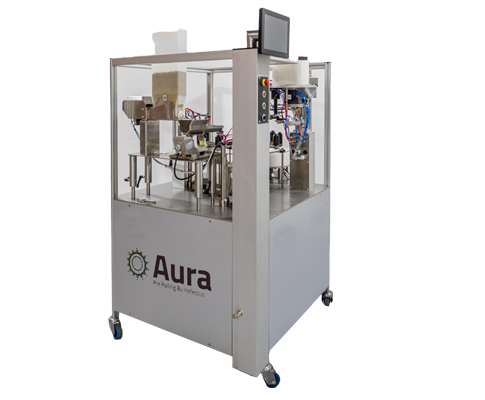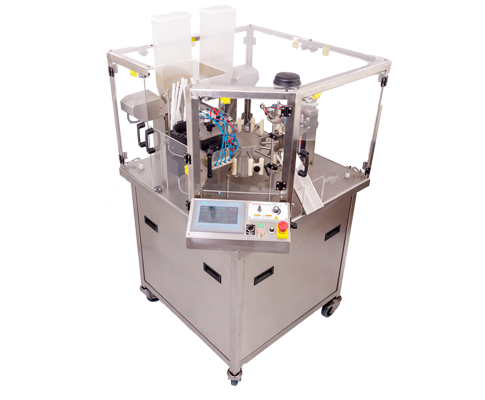Automation is no doubt a transformative force for cannabis operators. Yet, with the rise of automation comes a significant concern – the impact on the workforce.
Contrary to the often-dreaded narrative of job cuts and workforce reduction, there lies a positive and forward-thinking approach to automation. It’s not just about replacing hands with machines; it’s about reshaping and repurposing the roles within the workforce.
Automation presents an opportunity to elevate the human element, shifting focus from repetitive, mundane tasks to more strategic, creative, and impactful roles.
The key lies in understanding and leveraging the potential of automation not as a replacement for the human workforce, but as a partner that complements and enhances human skills and capabilities.
Understanding Workforce Repurposing
In the age of automation, the concept of workforce repurposing is pivotal.
Workforce repurposing is the strategic reallocation of human resources to roles that are more valuable in an automated environment.
It’s about recognizing and harnessing the unique strengths, creativity, and problem-solving abilities of the human workforce that machines cannot replicate.
Optimizing the human side of business
Unlike workforce reduction, which focuses on decreasing the number of employees to cut costs, repurposing is about optimizing the human contribution to the business.
It involves identifying new areas where the workforce can add significant value, such as quality control, innovation, customer service, and strategic planning.
In this way, automation doesn’t lead to job losses but to job evolution.
This shift is particularly crucial in industries like cannabis, where the touch of a skilled workforce can make a significant difference in quality control and product innovation.
In essence, as machines take over the repetitive tasks of production, employees are freed to focus on areas that can significantly impact the business’s growth and customer satisfaction.
The Benefits of Workforce Repurposing
Embracing automation and repurposing the workforce brings a multitude of advantages to businesses, especially in sectors like cannabis, where precision and innovation are paramount.
- Enhanced Productivity and Efficiency: When routine tasks are automated, employees can dedicate their skills and time to more complex and creative tasks. This shift increases productivity and ensures that the human workforce is engaged in more fulfilling and impactful work, directly contributing to the business’s growth.
- Improved Employee Morale and Job Satisfaction: Repurposing rather than reducing the workforce can significantly boost employee morale. Employees feel valued and secure in their roles, knowing that their contributions are crucial to the company’s success. This leads to higher job satisfaction, reduced turnover, and a more committed workforce.
- Fostering Innovation and Creativity: Freeing up employees from repetitive tasks opens the door to innovation. In the cannabis industry, this can mean focusing on product development, enhancing quality control, and improving customer experiences. These are areas where the human touch and creativity play a critical role in distinguishing a company in the market.
- Cultivating a Future-Ready Workforce: By repurposing employees in roles that align with future trends and demands, businesses are essentially future-proofing their workforce. This approach prepares employees for the evolving industry landscape, equipping them with skills and experiences that are relevant and valuable in an automated world.
In summary, workforce repurposing in the age of automation is not just a necessity; it’s an opportunity. It’s an opportunity to enhance efficiency, boost morale, foster innovation, and prepare for the future.
Strategies for Effective Workforce Transition
Successfully transitioning a workforce in the age of automation requires thoughtful planning and execution. Here are key strategies:
- Comprehensive Training Programs: Develop training programs tailored to the new roles and skills required in an automated setting. This could include technical training for operating new machinery, as well as soft skills development for areas like quality control and customer engagement.
- Clear Communication and Support: Maintain open communication channels to address any concerns and provide support during the transition. This helps in managing change effectively and ensures that employees feel valued and part of the journey.
- Career Development Opportunities: Offer opportunities for career advancement within the new structure. This can include cross-training in different departments, leadership training, or educational programs to foster a culture of continuous learning and growth.
- Focusing on Employee Strengths: Identify and utilize the unique strengths of each employee. This approach ensures that people are placed in roles where they can thrive and contribute most effectively.
By implementing these strategies, businesses can ensure a smooth and successful transition to a more automated, efficient, and innovative workplace.
Addressing the Challenges
While the transition to a more automated workplace and repurposing the workforce offers numerous benefits, it’s not without its challenges. Here are some key issues and ways to address them:
- Overcoming Resistance to Change: Change can often be met with resistance. To manage this, it’s crucial to involve employees in the transition process, openly discussing the benefits and addressing any fears or concerns they may have.
- Skill Gaps: Automation may create skill gaps as the nature of work changes. Tackling this requires a proactive approach to training and upskilling, ensuring employees are equipped with the necessary skills to thrive in new roles.
- Maintaining Quality and Consistency: As tasks shift from manual to automated, maintaining quality and consistency can be challenging. Regular monitoring and quality checks, combined with continuous training, can help maintain high standards.
- Adapting to New Roles: Employees may find it challenging to adapt to new roles that are more aligned with automation. Mentorship programs and gradual role transitions can ease this process, helping employees to gradually acclimate to their new responsibilities.
By acknowledging and proactively addressing these challenges, businesses can smooth the transition to an automated workplace, ensuring the workforce is not only retained but also more engaged and productive.
Future-Proofing Your Workforce
In industries like cannabis, where innovation and efficiency are key, automation offers a unique opportunity to repurpose and reinvigorate the workforce, steering businesses towards new horizons of productivity and growth.
By viewing automation as a partner rather than a replacement, businesses can harness its full potential. It’s about optimizing operations, enhancing the value of human skills, and preparing for a future where technology and human ingenuity work in tandem.









